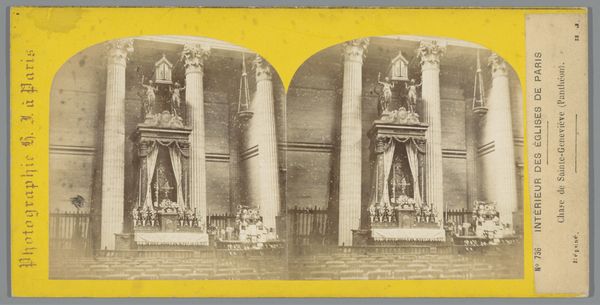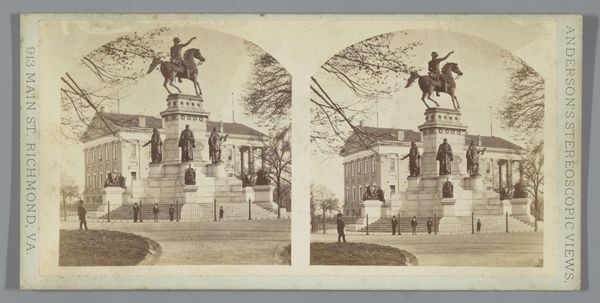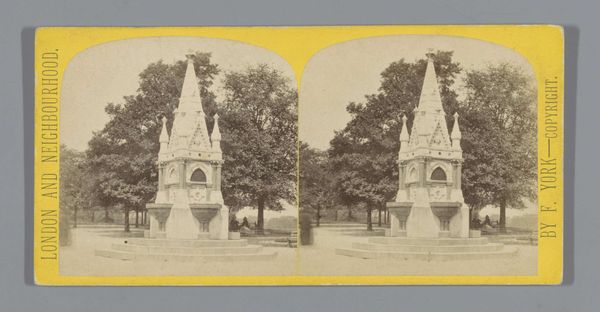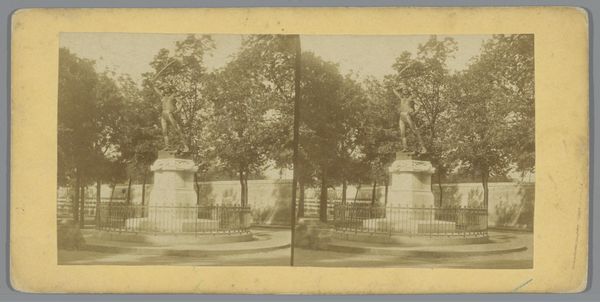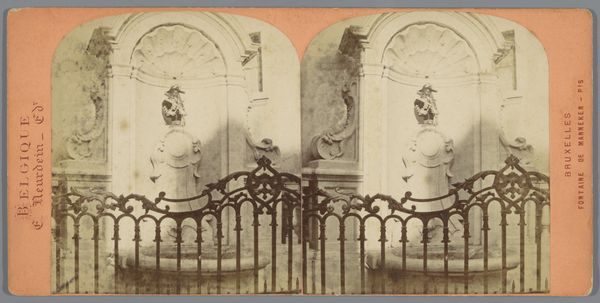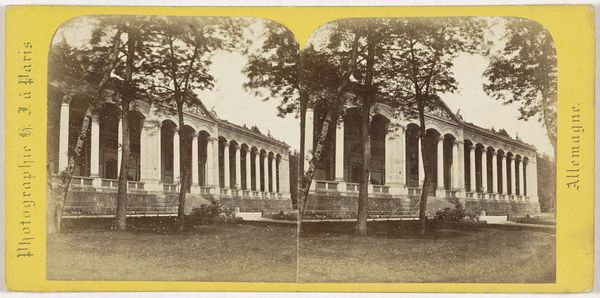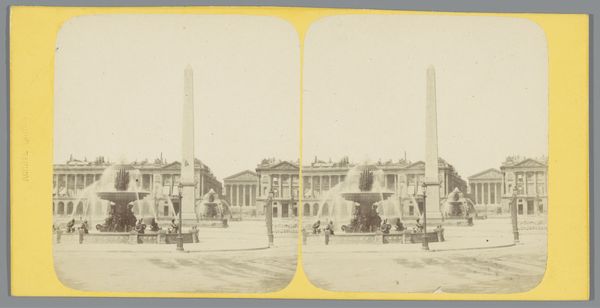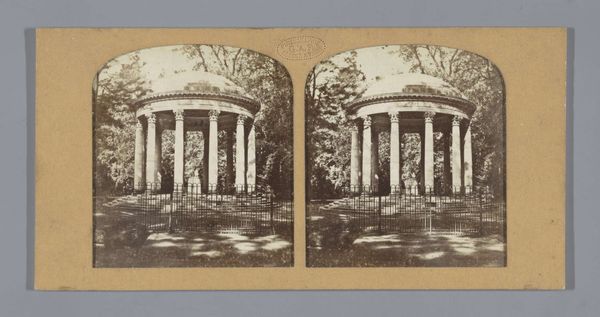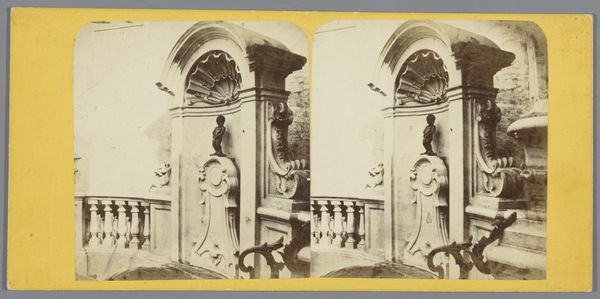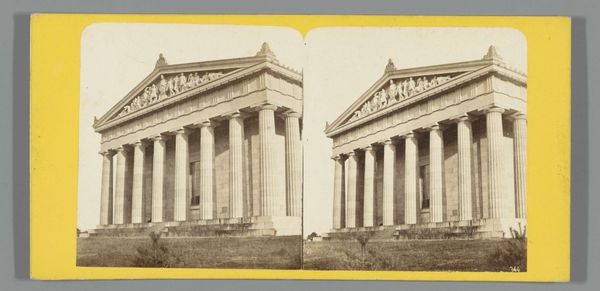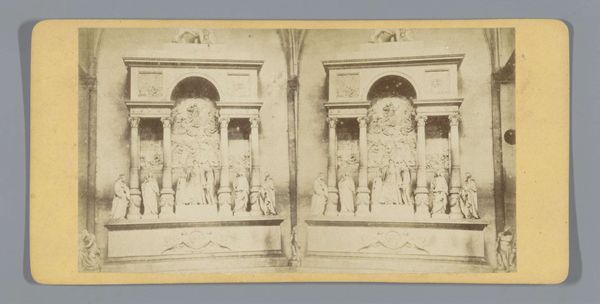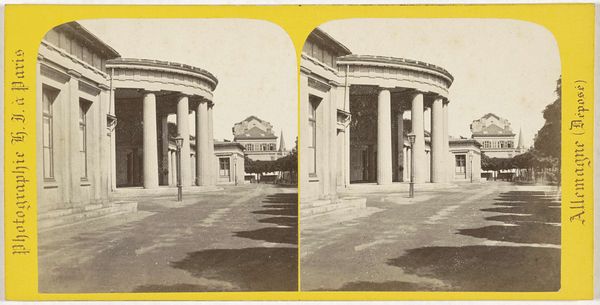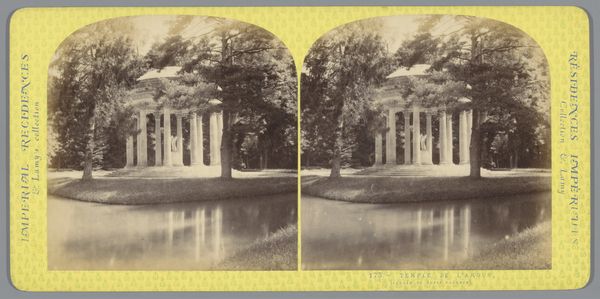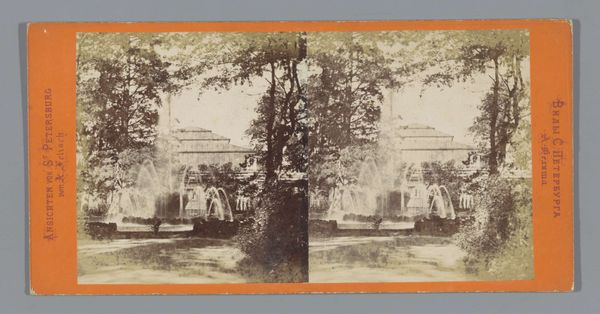
Dimensions: height 86 mm, width 172 mm
Copyright: Rijks Museum: Open Domain
Curator: So, here we have "Interieur van het Panthéon in Parijs," or "Interior of the Panthéon in Paris," captured sometime between 1850 and 1880 by Hippolyte Jouvin. This print, using photographic methods, presents a grand cityscape, frozen in time. What are your initial thoughts? Editor: A hushed reverence is my first impression. Those towering columns, like reaching for something divine... they impose a silence. The light, soft and diffused, it feels more like a memory than a present moment. Almost like gazing at a dream. Curator: That's a lovely reading. Considering the Pantheon's history – initially commissioned as a church, then becoming a mausoleum honoring prominent French figures, before being reconsecrated as a church again – that feeling of sacred space makes perfect sense. Jouvin captures it at a potentially contentious point, given its fluctuating identity. Editor: So, in this period, its purpose would still be in question... Do you think that tension, between secular and sacred, informs the photograph's restrained quality? The almost ghostly lighting hints that maybe it doesn’t quite know what it's meant to be? Curator: It's a very astute question. The composition reinforces that liminal space, doesn't it? Look at the symmetry, those perfectly placed columns reflecting Neoclassical ideals of order and reason, while that central shrine to the Virgin Mary brings an entirely different spiritual atmosphere to the architectural logic. Editor: Absolutely. That carefully constructed space...and then that sudden burst of what I think is white, fresh-looking floral ornamentation on the altar. It makes the classical architecture feels more feminine, more alive. Curator: And consider the medium – photography – still relatively new at the time. Capturing these grand interiors democratized access to these cultural treasures. This isn’t some aristocratic painting, but a reproduction for the masses. Editor: It brings it within reach. I still sense melancholy lingering – a meditation on permanence and what fades with time. Maybe Jouvin felt the same way. Curator: I think he did, yes. It really encapsulates how political ideals intersect with religious faith, how cultural symbols evolve and, sometimes, contradict themselves. Thank you! Editor: And thank you. It shifted from just seeing a space to something far more complex about belief itself.
Comments
No comments
Be the first to comment and join the conversation on the ultimate creative platform.
